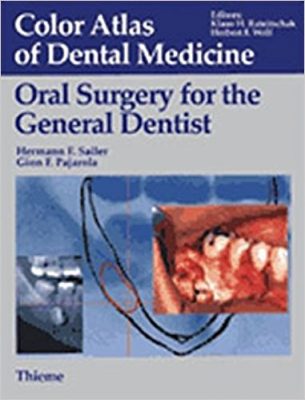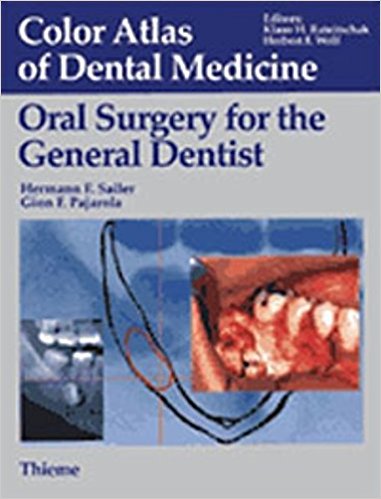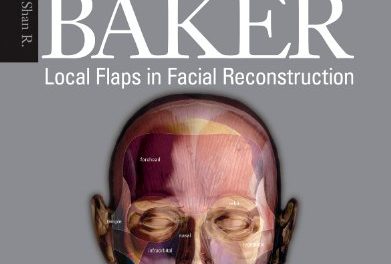 Authors: Herman F. Sailer, DDS; and Gion F. Pajarola, DDS
Authors: Herman F. Sailer, DDS; and Gion F. Pajarola, DDS
Translators: Thomas Hassell, DDS, and Felix Stutz, DDS
(Part of the Series: Color Atlas of Dental Medicine)
Illustrator: Joachim Hermann
Series Editors: Klaus H. Rateitschak, DDS; and Herbert F. Wolf, DDS
Publisher: Thieme – 360 pages, with 1649 illustrations
Book Review by: Nano Khilnani
This large-size (12.5” x 9.5”) book is not meant to be a typical textbook. It is basically a visual surgery manual for use by medical-dental residents and students receiving training in oral and maxillofacial surgery.
However even established surgeons may find information in it that is useful to them because it contains some complex surgical procedures presented step-by-step by the authors who have many years of clinical experience.
Most of the surgical procedures covered in this atlas can be done in clinics at an outpatient setting using local anesthesia. However other operations – the difficult ones – can only be performed under general anesthesia and the necessary facilities for optimal outcomes.
The authors point out that in all cases, adequate and appropriate training and development of skills are required, and that oral surgery is only one part of dentistry and maxillofacial surgery.
The basic purpose of the authors in developing this work is to provide cases that will improve the quality of oral surgery procedures. To help readers avoid errors, they have provided “cautions” and “clinical tips” throughout the book. Indeed, this is so essential.
In addition, you will find within the pages a guide that is termed the SAC Index with procedures labeled Simple, Advanced, or Complex.
A large volume of information on dental procedures has been accumulated, the authors point out. However space limitations within a printed text allow only a portion of it to be used. But this can be done only after much work sorting through the gathered pages and deciding which parts to use that are relevant to, and conforming with the title of this book.
In my view, Drs. Sailer and Pajarola have done this work of distilling in an expert manner, yet they still cover a lot of topics here. We provide for you below, as your overview of the contents, the titles of the 14 “groups of topics” of information:
- Introduction
- Patient Examination
- Surgical Principles
- Medical Principles
- Tooth Extraction
- Retained (Non-Erupted) Teeth
- Treatment for Abscess
- Root Tip Resection
- Cysts
- Dental Diseases of the Maxillary Sinus
- Diseases of the Salivary Glands
- Plastic Surgical Procedures in Soft Tissue and Bone
- Traumatology
- Laser Surgery
The major feature of this atlas being illustrations, you will note that the number is quite large: nearly 1650. They average more than 4.5 on a per-page basis. The images used are varied and they truly enhance the value of this book.
Besides full-color photos of oral surgical procedures, instruments and materials needed for each procedure, you will also find charts, computed tomograms (CTs), radiographs, sketches, and tables providing data.
In sum, this is an outstanding and unique work on oral surgery that is valuable to trainees and practitioners. It is practical to use and comprehensive as a reference manual as well.
Authors:
Herman F. Sailer, DDS, MD is Director of the Oral and Maxillofacial Section at the Dental Institute of the University of Zurich in Zurich, Switzerland.
Gion F. Pajarola, DDS is Head of the Oral and Maxillofacial Section at the Dental Institute of the University of Zurich in Zurich, Switzerland.
Translators:
Thomas Hassell, DDS, PhD; and Felix Stutz, DDS
Illustrator:
Joachim Hermann
Series Editors:
Klaus H. Rateitschak, DDS, PhD is Professor and Chairman of the Department of Cardiology and Periodontology at the Dental Institute of the University of Basle in Basle, Switzerland.
Herbert F. Wolf, DDS is a Private Practitioner of Periodontics, and Instructor at the Dental Institute of the University of Basle in Basle, Switzerland.







